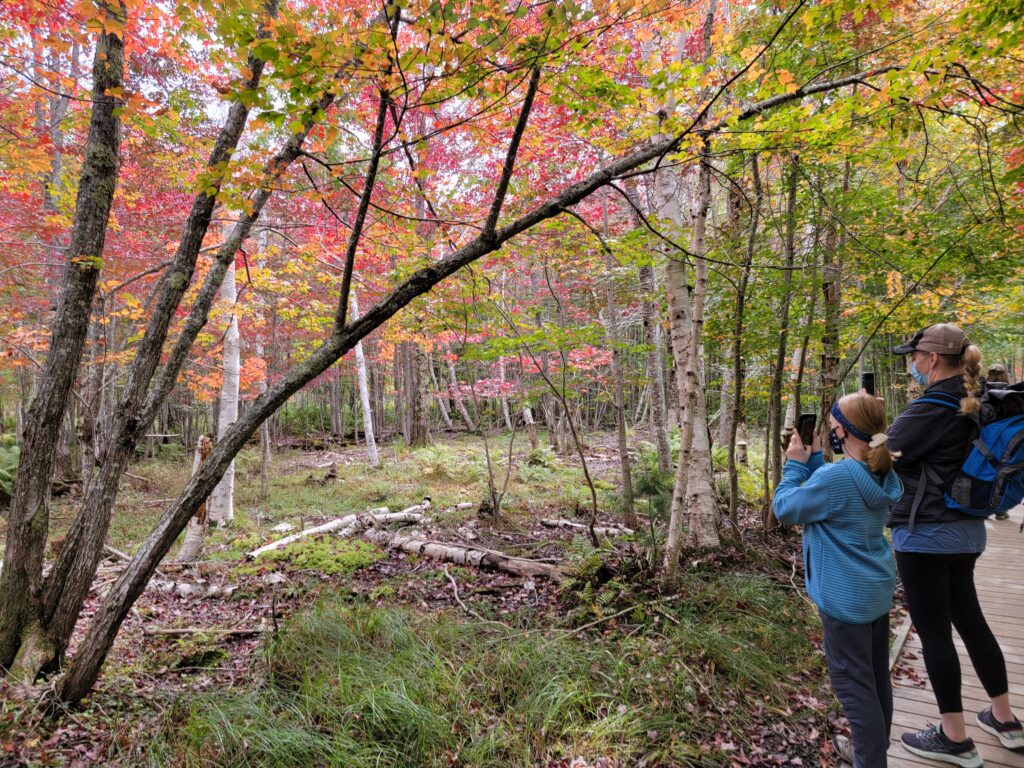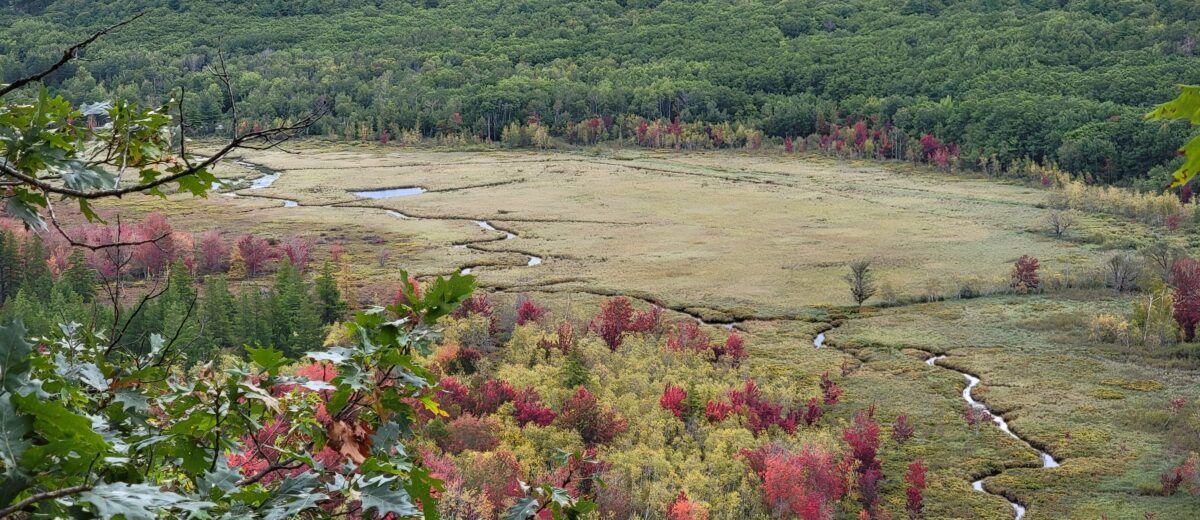Acadia National Park is a measurably different than it was at its founding more than 105 years ago. While its beauty endures, its forests, lakes and coasts are being affected by increasing numbers of visitors, changes in land use, pollution, invasive species, and climate change. These changes and their effects are likely to continue and accelerate, with dramatic impacts on the park.
In recent years, the National Park Service managers have shifted their approach to restoring and protecting park resources, employing the “resist, accept, direct framework” that anticipates ongoing and future change. Through Wild Acadia, we are working with the National Park Service and Friends of Acadia to implement this new approach in three areas of the park:
- On Cadillac Mountain, experiments continue to determine the best way to restore soil and plants given changing conditions, and partners are beginning to explore what it would look like to expand this restoration to other park summits.
- In Bass Harbor Marsh, we are helping to measure the results of native plant restoration and plan for future resilience of the surrounding forest.
- At the Great Meadow Wetland, we are engaging citizens in monitoring the success of efforts to restore water flow through Cromwell Brook and manage invasive plants like glossy buckthorn.

